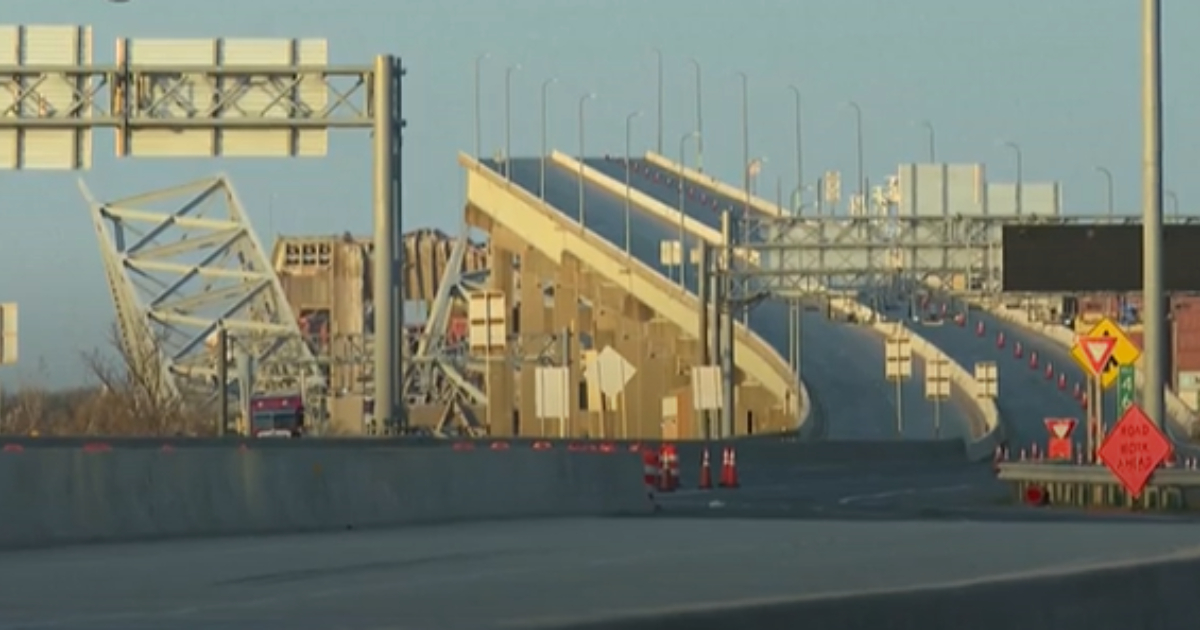In Baltimore, a city in the State of Maryland, after the bridge Francis Scott Key collapsed, a state of emergency was officially triggered. At 1.30 am, in fact, a cargo ship – the freighter Dali, which it flew the flag of Singapore and had left Baltimore to head towards Sri Lanka – hit one of the pylons that supported it, causing flames and the collapse of the bridge and causing cars and people to fall into the water. What do we know about the accident so far? The ship had “a power problem,” but she managed to emit a “mayday” before colliding, allowing authorities to stop traffic on the bridge, which they were on in total 8 people at the time of the crash, according to reports from Maryland’s transportation secretary Paul Wiedefeld. The governor of MarylandWes Moore, in a press conference he also stated that the bridge “was in a situation of full compliance with the regulations” and he hadn’t structural problems.
The cargo ship at the time of the accident was not driven by a crew member, but by local pilots specifically employed “to avoid accidents like the one that occurred” reported Wiedefeld. “Pilots move ships in and out of Baltimore Harbor,” he explained. According to initial reconstructions, everything suggests it was an accident. “There is no indication that this was an intentional act and we are evaluating the impact on the Port of Baltimore,” explained the Secretary of Homeland Security, Alexander Mayorkasexcluding, as the Police had already done, that the collapse of the Baltimore bridge could be linked to a terrorist act. Even the FBI ruled out terrorism: the Baltimore division of the government’s federal law enforcement agency said on X that “there is no specific, credible information to suggest any links to terrorism at this time.”
Because of “loss of propulsion“, in short, the container ship lost control and alerted the authorities to the risk of collision, as ABCnews also reports, citing an unclassified report from the Cybersecurity and Infrastructure Security Agency. “The vessel notified the Maryland Department of Transportation that they had lost control and that a collision with the bridge was possible,” the report said. The pilots they dropped anchor before impact, as part of emergency procedures initiated after it lost propulsion, the Maritime and Ports Authority of Singapore (MPA) said. “The vessel’s management company, Synergy Marine Pte Ltd, reported to the MPA that just before the accident, the vessel Dali had suffered a momentary loss of propulsion,” the MPA statement read. “As a result, he was unable to stay the course desired.” The vessel is currently maintaining its position at the collision site and is in stable conditions.
The ship was inspected 27 times since its construction in 2015 and has since presented “deficiencies” in two cases, according to the records of the Electronic Quality Shipping Information System (Equasis) consulted by CNN. In June 2023, in San Antonio, Chile, Chilean authorities reported a “shortage” for “propulsion and auxiliary machinery – indicators, thermometers, etc.,” according to Equasis records. But also in November 2016, in Antwerp, Belgium, another “deficiency” was identified at the Dali due to “structural conditions” described as “damage to the hull which compromises navigability”, due to a perforation: as confirmed by port officials to the US broadcaster, in 2016 the ship was involved in an accident in the port of Antwerp. The last inspection carried out dates back to September 9, 2023, when it was inspected by the United States Coast Guard in New York. According to the database, from that inspection no deficiencies were detected.
The Baltimore bridge collapsed for a Domino effect: a localized impact, such as that which occurred on the part of the merchant ship, was sufficient for the consequences to quickly have repercussions on the entire structure. The cause is also to be found in the design criteria adopted in the past, which did not adequately consider the concepts of structural strength. “It is difficult to generalize about these works because they have a high degree of singularity, but from the videos and the little information available we can say that it was a phenomenon of progressive collapse,” he explained to Ansa Fabio Biondiniprofessor of theory and design of bridges of Politecnico di Milano. It was, he continues, damage triggered by a localized impact, the one caused by the passage of the cargo, and which then spread to the components of the structure, causing its overall collapse. It is difficult to say how many bridges like this have been built: “It is a widespread typology, but this bridge – observes the expert – still has some singularities that make it almost unique. Furthermore, events like the one that led to the collapse of the Baltimore bridge have a exceptional character. We must also consider that there is a lot of naval traffic today changed compared to the time in which this bridge was designed and built.”
